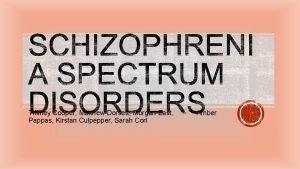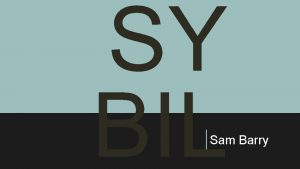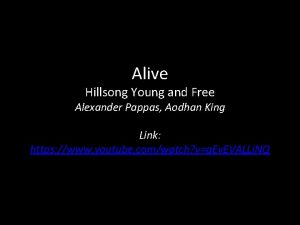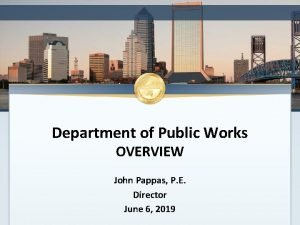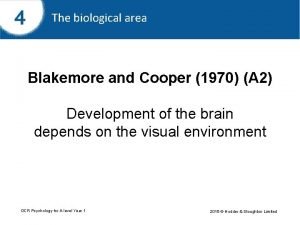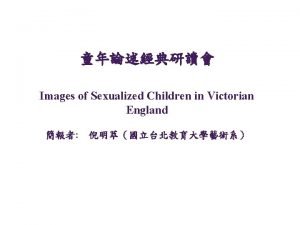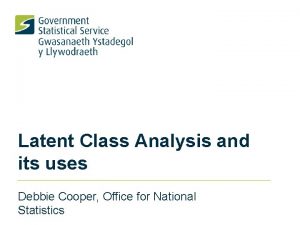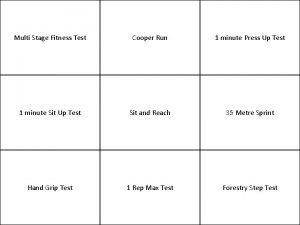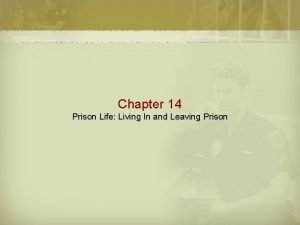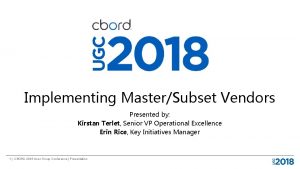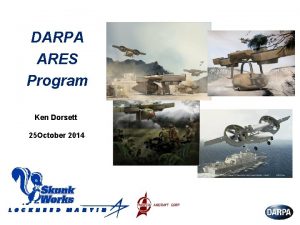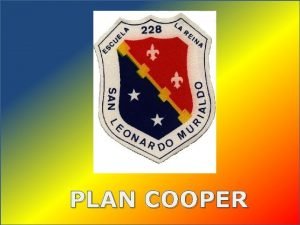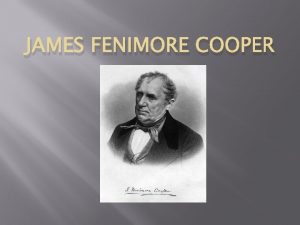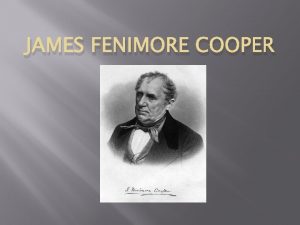Tiffiney Cooper Matthew Dorsett Morgan East Pappas Kirstan
















- Slides: 16

Tiffiney Cooper, Matthew Dorsett, Morgan East, Pappas, Kirstan Culpepper, Sarah Corl Amber

§ Delusional – also previously known as paranoid disorder- where one can no longer tell what’s reality; having delusions for at least one month. § § § Erotomanic Type – in love with someone else Grandiose type – over-inflated sense of self worth Jealous type – believe spouse of significant other is unfaithful Persecutory type – someone is spying or “out to get them” Somatic type – delusion that they have some type of medical condition Mixed type – have no single theme § Catatonia – withdrawn state, mute, negative, and will often present in an unusual body position, please see table 15 -1 on page 344. This is associated with different medical conditions § Schizoaffective – Dx of schizophrenia and also have a major mood disorders such as depression § Fun Fact: 2. 4 Million ADULTS suffer from these disorders in U. S. alone

§ Brief psychotic – can be from an obvious stressor, without an obvious stressor, as well as postpartum; is usually sudden and will resolve; last at least one day but less than one month § Schizophreniform – features found in schizophrenia, greater than one month but less than six § Schizophrenia – meaning “split” “mind”, history longer than six months

§ Positive and Negative Symptoms of Schizophrenia § Positive symptoms may be described as an excess of normal functioning manifesting as delusions and hallucinations. Contrastingly, negative symptoms present as a decrease in or loss of functioning such as social isolation, deficient energy (anergia), and the inability to experience pleasure (anhedonia). § Positive symptoms typically respond better to treatment v. s. negative symptoms. § Behavioral and psychological symptoms associated with schizophrenia are also categorized by the area of functioning that is impaired. § See Box 15 -2 on page 346 for an overview of positive and negative symptoms.

POSITIVE Content of thought: § Delusions – false beliefs incongruent with the individual’s personal, cultural and intellectual background. Types of delusions are determined by content and may include delusions of: persecution, grandeur, reference, control of influence, somatic, and nihilistic delusion. § Religiosity – Excessive obsession with religious ideas and demonstration of religious behavior. § Paranoia – Extremely suspicious of others. May believe their food has been poisoned. § Magical Thinking – Believe their thoughts or behaviors can control people or situations. Sense of Self: § Echolalia – Repeat words that they say or hear over and over. § Echopraxia – Repeatedly imitate movements that they see others make. § Identification and Imitation – Take on behaviors that they observe in others. § Depersonalization – Feelings of unreality. Ex. Sense of “out of body experience” Form of Thought: § Associative Looseness – Sentences shift between unrelated topics. Speech may be incoherent. § Neologism – Invention of new words with symbolic meaning that only they understand. § Concrete Thinking – Interpret everything as literal. Ex. Bouncing off the walls. § Clang Associations – Word choice governed by similar sound, typically rhyming words. § Word Salad – Randomly grouped words without logical connection. Perception: § Hallucinations – False sensory perception not associated with real external stimuli. Hallucinations may be auditory, visual, tactile (touch), gustatory (taste), and/or olfactory. § Illusions – Misperceived real external stimuli. Ex. A coat in the closet may look like a person.

Interpersonal Functioning: NEGATIVE Affect: § Inappropriate – Emotional tone incongruent with circumstance. Ex. Laughing at a funeral § Bland or Flat – Weak emotional tone, appearing as void of ( having no) emotion § Apathy – Emotional indifference. Manifests as bland/flat affect § Impaired Social Interaction- May cling to and invade personal space of others. § Social Isolation – Exclude the external environment to focus on themselves. Psychomotor: § Anergia – Insufficient energy to perform ADLs and interact with others. § Waxy Flexibility – Bizarre and uncomfortable positioning, held for long periods of time § Posturing – Voluntarily assume bizarre or Volition: Unable to initiate goaldirected activities § Emotional Ambivalence – Opposing emotions that may interfere with decisions or beliefs. § Deteriorated Appearance – Neglect personal hygiene and grooming. inappropriate postures. § Pacing and Rocking – Common Associated Features: § Anhedonia – Inability to experience pleasure. High risk factor for suicide. § Regression – Retreat to an earlier developmental level

TYPICAL § Used for: § -Bipolar affective disorder, Depressive and drug-induced psychoses, Schizophrenia, Autism § -Movement disorders (such as Tourette’s syndrome) § -Nausea, intractable hiccups § How typical antipsychotics work: § -Improve thought processes and the behavior of the client with psychotic symptoms, especially the client with schizophrenia; § -Block dopamine receptors in the brain, thereby reducing the psychotic symptoms (Haldol) § -Phenothiazines lower the seizure threshold (Thorazine)

Side effects § CNS - Sedation, delirium § Cardiovascular - Orthostatic hypotension, syncope, dizziness, ECG changes § Dermatologic - Photosensitivity, skin rash, hyperpigmentation, pruritus § GI - Dry mouth, constipation § GU - Urinary hesitancy or retention, impaired erection § Hematologic - Leukopenia and agranulocytosis § Metabolic/endocrine - Galactorrhea, irregular menses, increased appetite, polydipsia § Contraindications/precautions § Contraindicated with known hypersensitivity; with CNS depression; when blood dyscrasias exist; in clients with Parkinson’s disease; or those with liver, renal, or cardiac Insufficiency § Caution with elderly, debilitated, or diabetic clients or clients with respiratory insufficiency, or Intestinal obstruction § Interactions § Additive anticholinergic § § effects with other drugs that produce these properties Additive hypotensive effects with beta-blockers Decreased absorption of antipsychotics with antacids and antidiarrheals Decreased effectiveness of antipsychotics with barbiturates Additive CNS depression with alcohol, antihistamines, antidepressants, sedativehypnotics, and anxiolytics

ATYPICAL: § Action: § weaker dopamine receptor antagonists § more potent of serotonin (5 -hydroxytryptamine) type 2 A (5 HT 2 A) receptors § exhibit antagonism for cholinergic, histaminic, and adrenergic receptors § Contraindications/Precautions: § hypersensitivity § comatose, severely depressed § elderly patients with dementia-related psychosis § lactation § clozapine – patients with myeloproliferative disorders, history of clozapine-induced agranulocytosis or severe granulocypenia, uncontrolled epilepsy

§ Side Effects § extrapyramidal symptoms and § Caution § elderly or debilitated patients § patients with cardiac, hepatic, or renal insufficiency § patients with a history of seizure § patients with diabetes or risk factors for diabetes § clients exposed to extreme temperatures § patients under conditions that cause hypotension § pregnant women, or children Interactions § additive hypotensive and CNS effects when taken in conjunction with HTN and CNS medication § additive anticholinergic effects when taken with other medications with anticholinergic effects, QT prolongation (risperidone) § decreased levels of levodopa and dopamine agonists (quetiapine, risperidone) prolactin elevation related to dopamine blockage § anticholinergic effects due to cholinergic blockage § blockage of the alph 1 -adenergic receptors: dizziness, orthostatic hypotension, tremors, reflex tachycardia § histamine blockade: weight gain, sedation

§ EPS Extrapyramidal Symptoms: § -Pseudoparkinsonism: (tremors, shuffling gait, drooling, rigidity)-Symptoms may appear 1 to 5 days following initiation of antipsychotic medication; occurs most often in females, the elderly, and dehydrated clients. § -Akinesia: (muscular weakness)- same as for Pseudoparkinsonism § -Akathisia: (continuous restlessness and fidgeting)- this occurs most frequently in women; may occur 50 to 60 days following initiation of therapy § -Dystonia: (involuntary muscular movements spasms of face, arms, legs, and neck)- this occurs most often in men and in people younger than 25 years of age § -Oculogyric crisis: (uncontrolled rolling back of the eyes)- this may appear as part of the syndrome described as dystonia. Dystonia and oculogyric crisis should be treated as an emergency situation. The physician should be contacted, and IV benztropine mesylate (Cogentin) is commonly administered. Stay with the client and offer reassurance and support during this frightening time.

§ EPS Treatment/Anticholinergic Treatment: § Benztropine mesylate (Cogentin) - 1 -4 mg daily/bid; give PO dose ASAP) § Diphenhydramine (Benadryl) - 25 -50 mg PO q 4 -6 hrs up to 48 hours; max 300 mg/day § Trihexyphenidyl § Pramipexole - 0. 125 mg PO tid

§ A rare, life-threatening reaction to antipsychotic drugs, usually more often seen with typical than atypical antipsychotics § NMS seems to affect men more than women, and stronger neuroleptics pose a higher risk of developing NMS § Onset usually occurs within the first couple weeks of beginning treatment, but can happen as early as hours or even as long as years after § Quickly progresses over the following 24 -48 hours

§ Signs of NMS: § § § § Severe parkinsonian muscle rigidity Very high fever (102˚-104˚F) Tachycardia Tachypnea BP fluctuations Diaphoresis Rapid deterioration of mental status to stupor and coma § Treatment: § Early identification and intervention are key to recovery § Discontinue antipsychotics as soon as possible § Dantrolene (Dantrium) or bromocriptine (Parlodel) is ordered by HCP to offset effects § Monitor VS, muscle rigidity, I&O, and LOC § Anyone taking antipsychotics should be assessed routinely, including increased temperature and parkinsonian symptoms


 Matthew dorsett
Matthew dorsett Cornelia wilbur
Cornelia wilbur Cornelia wilbur
Cornelia wilbur Southern colonies webquest
Southern colonies webquest Hillsong young & free aodhan king
Hillsong young & free aodhan king Tina pappas rutgers
Tina pappas rutgers Vic pappas
Vic pappas John pappas city of jacksonville
John pappas city of jacksonville Horizontal movement of air is called
Horizontal movement of air is called Kalahari desert on africa map
Kalahari desert on africa map East is east and west is west
East is east and west is west Blakemore and cooper (1970)
Blakemore and cooper (1970) Gustave doré little red riding hood
Gustave doré little red riding hood Debbie cooper net worth
Debbie cooper net worth Fartlek pyramid
Fartlek pyramid Cooper color codes
Cooper color codes Cooper v pate
Cooper v pate
